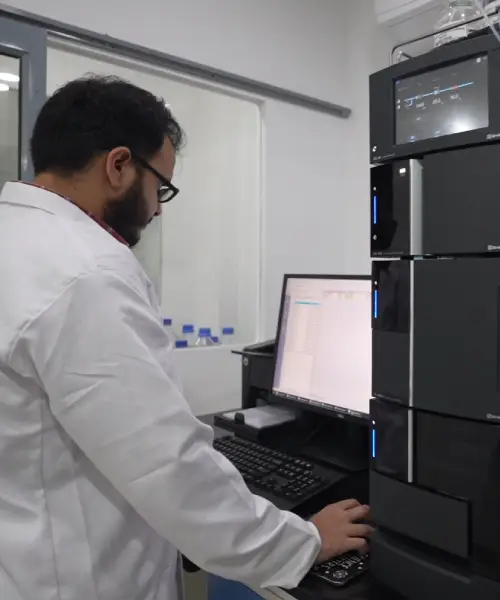
API Pharma
Niche active pharmaceutical ingredients (APIs) are specialized compounds used in the formulation of drugs targeting rare diseases, orphan indications, or complex therapies. Unlike bulk APIs, which are produced at scale for common ailments, niche APIs cater to smaller patient populations or require unique synthesis techniques.
As personalized medicine and targeted therapies continue to grow, so does the demand for niche pharma active ingredients. These APIs often involve high-potency compounds, low-volume production, and a stringent focus on purity and compliance—making them a challenge to source and manufacture.
What Makes an API “Niche”?
A niche API typically meets one or more of the following criteria:
- Limited Production Volumes: Due to low demand in rare or orphan diseases.
- Complex Synthesis Pathways: Involving multi-step reactions or high containment.
- High-Potency Characteristics: Requiring specialized facilities for handling.
- Regulatory Constraints: APIs with narrow therapeutic indexes often undergo more scrutiny.
These APIs differ significantly from mass-market compounds in their development and regulatory pathways. They're often manufactured by a focused active pharma ingredient company that specializes in custom synthesis, backward integration, and scalable production under strict cGMP guidelines.
Challenges in Sourcing Niche APIs
Regulatory Complexity
Niche APIs often fall under stricter regulatory oversight due to their potency and limited safety data. This means that manufacturers must maintain complete and transparent documentation, including Drug Master Files (DMFs), stability data, and impurity profiles.
Limited Availability and High Cost
Because of their specialized nature, niche pharma active ingredients are not widely available in the open market. This results in longer lead times, higher prices, and increased difficulty in finding secondary suppliers for risk mitigation.
Quality and Compliance Issues
The need for high purity, batch consistency, and regulatory alignment makes quality control a significant challenge. Even minor deviations can delay clinical trials or regulatory approval, especially in the case of rare disease therapies.
How to Identify Reliable Active Pharmaceutical Ingredient Suppliers
Finding the right active pharmaceutical ingredient suppliers is a critical step in ensuring the success of your drug development project. Here’s what to look for:
Certifications and Compliance
Always verify the supplier's GMP status and check whether their facilities have been audited by international agencies like the USFDA, EMA, or TGA. The presence of an open or restricted DMF is a strong indicator of regulatory readiness.
Technical Capabilities
The complexity of niche API synthesis demands deep chemical expertise, access to specialized equipment, and process adaptability. Suppliers must also excel in scalability—being able to move from gram-scale R&D to commercial production without compromising quality.
Transparency and Reputation
Reliable communication, consistent documentation, and a track record of successful regulatory audits are all signs of a dependable active pharma ingredient company.
The Role of CDMOs in Sourcing and Developing Niche APIs
Contract Development and Manufacturing Organizations (CDMOs) play a pivotal role in sourcing and developing niche APIs, offering end-to-end services that encompass everything from route scouting to regulatory support.
End-to-End API Development
Modern CDMOs help clients through every phase of the API development process, from pre-formulation and process optimization to scale-up and validation.
Analytical Support
Advanced analytical labs within CDMOs support method development, impurity profiling, and stability testing, ensuring that the product meets regulatory expectations. These capabilities align with comprehensive api manufacturing services, which streamline the supply chain for niche APIs.
Integrated CDMO Advantage
According to a 2023 industry report by GlobalData, the active pharmaceutical ingredient CDMO market is projected to grow at a CAGR of 6.3% through 2028. This growth reflects an increasing reliance on CDMOs to manage complexity, reduce costs, and expedite timelines.
Working with an integrated CDMO minimizes the risk of communication gaps, ensures better traceability, and improves speed-to-market—especially crucial for rare and high-value therapies.
Conclusion
As the pharmaceutical landscape continues to evolve toward personalized and targeted therapies, the importance of pharma active ingredients tailored for niche indications becomes more pronounced. Sourcing these APIs demands rigorous attention to regulatory standards, quality assurance, and strategic supplier partnerships.
By selecting reputable active pharmaceutical ingredient suppliers and collaborating with experienced CDMOs, pharmaceutical companies can overcome the challenges of sourcing, synthesis, and scalability. Ultimately, the right partner ensures compliance, minimizes risk, and accelerates time-to-market—delivering much-needed therapies to the patients who rely on them.






